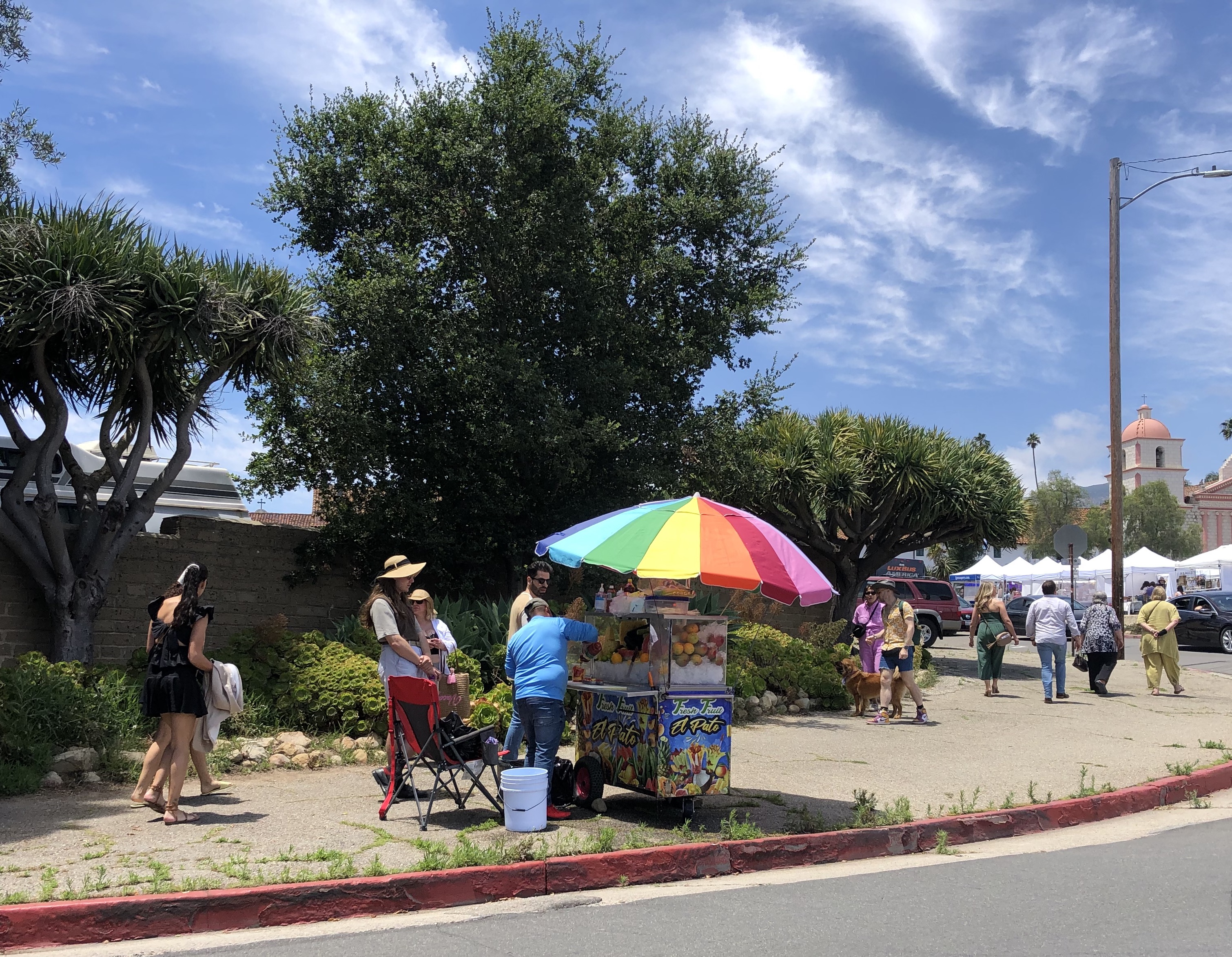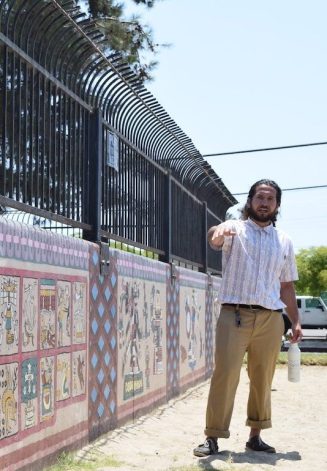Surge of Unpermitted Street Vendors in Santa Barbara Prompts Quest for Health and Safety Solutions
Area Historian Shares Takeaways from Community Meeting About Out-of-Compliance Sidewalk Vendors

Last month, I attended a community meeting organized by Santa Barbara Eastside Society at the Eastside Library in Santa Barbara, where representatives from the city and county gave an overview presentation about sidewalk vending and addressed the community about the uncomfortable situation of street vending without permits.
Over the past year, Santa Barbara has experienced an increase in street vendors setting up shop without permits: from pushcarts with the San Judas design at the beach waterfront to lively taco pop-ups on busy corners of the Eastside and Westside to L.A.-based street-dog providers working the late hours downtown.
The community meeting was a packed house with neighborhood members, fledgling and established business owners, and representatives from local politicians in the Martin Luther King Jr. room.
They went over what defines sidewalk vending in California, Santa Barbara County, and the city and made a clear distinction between food trucks and Compact Mobile Food Operations, which are pop-ups and pushcarts. In addition, they passed a Sidewalk Vending Information Guide, allowing me to point out and emphasize the crucial aspects.
- All sidewalk vendors operating in the city are required to have a City of S.B. Vendor’s License, California Department of Tax and Fee Seller’s Permit, and County of S.B. Health Permit.
- Vending carts cannot be longer than 74 inches, wider than 34 inches, or taller than 80 inches.
- No vending is allowed at parking lots by parks, waterfront, or beach; on the 500 block of State St.; within 500 feet of schools between 7:30 a.m. and 4:30 p.m.; or on the sidewalk entry to Stearns Wharf or the wharf’s commercial zones between midnight and 6 a.m.
- Vending carts cannot impede pedestrian traffic or reduce the path of travel on a sidewalk or pedestrian pathway to less than four feet
- Gas-powered generators are prohibited, and vendors cannot connect to or use a water or electricity source without the owner’s consent
- Sidewalk vendors who sell food must provide a trash receptacle for customers. If they are stationary food vendors, they must be within 200 feet of a readily available toilet with handwashing facilities.
You can read the summarized S.B. Street Vendor guide here.
Notably, California laws SB-972 (California Retail Food Code) and SB-946 (Sidewalk Vendors) represent significant shifts in treating such infractions as violations rather than criminal offenses, demonstrating a more balanced and pragmatic approach.

I interpreted the government officials’ overall position as being between a rock and a hard place. On one side, they’re getting constant pressure from local business owners who pay high overhead costs and the conservative citizens of NextDoor.com (online neighborhood watch). On the other side would be people that are “pro-taco” with an entrepreneurial spirit and social media users who hold the mantra of “protecting the eloteros” dearly.
Barbara Andersen, senior assistant to the city administrator, succinctly articulated the central question: “How can we work together to make this lawful? We love the food, and tourists do too, but it’s really dangerous without the proper permits.”
Street vendors without proper permits would receive warnings initially, followed by a $100 violation ticket. For each subsequent day of operation without the necessary permits, vendors would face a $500 ticket. The enforcement team responsible for ensuring compliance comprises representatives from County Public Health, the city, and police.
During the public comment, which was in English and Spanish, a downtown business owner shared his frustration that it’s unfair for the city to let the street vendors remain in operation without the proper licenses and permits when he (and countless others) went through the rigorous, slow process of becoming a legit business in the city.
The city attorney representative pointed out the liability situation at the intersection of Ortega and State Street, where propane tanks, fire, grease, and careless pedestrians and e-bike cyclists are a recipe for a disaster.
As the community meeting came to a close, it became evident that the issue of street vending would continue to be a subject of ongoing concern. The government representatives acknowledged the need for further dialogue and collaboration to find a balanced and sustainable approach that considers both the interests of local businesses, public health, and the aspirations of street vendors.
Beyond the meeting, I learned that the influx of vendors are coming from Los Angeles and Santa Ana and are driven by oversaturated and fiercely competitive markets. Also, Jacqueline Inda, cofounder of the Greater Santa Barbara Hispanic Chamber of Commerce, shared with me that there’s an element of human trafficking, with some vendors reportedly employing undocumented workers who are forced to work off debts.
The city plans to work with local organizations to create a comprehensive solution and more meetings to address the ongoing issue of street vending without permits. There will be another community meeting about sidewalk vendors on Monday, June 26, at 6 p.m. at Casa Azteca (1433 State St.).
Michael Montenegro is a freelance writer and founder of Chicano Culture S.B. Follow him @montenegromedia.




You must be logged in to post a comment.